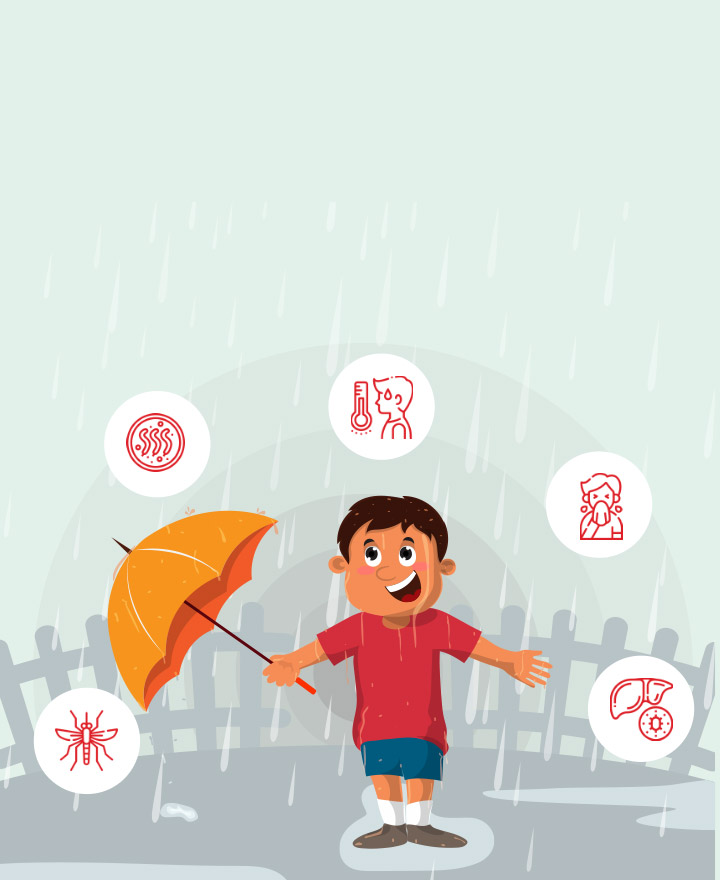

Is Cholera a Water Washed Disease?
Many people often get confused about how cholera spreads and may ask: Is cholera a water-washed disease? The answer is no; cholera is a waterborne disease that leads to severe diarrhoea and vomiting. If not treated promptly, cholera can result in dehydration and death. Read on to know more.
Water-Washed vs. Waterborne Diseases
Water-Washed Diseases:
These are diseases that spread due to inadequate water supply for hygiene purposes, such as washing hands, bathing, and cleaning. Examples include:
• Diarrheal diseases: Often exacerbated by poor sanitation.
• Skin infections: Resulting from lack of hygiene.
Waterborne Diseases:
These diseases are caused by pathogens present in contaminated water. Cholera fits into this category as it is primarily spread through drinking water or food contaminated with fecal matter.
Why Cholera is Not Water-Washed?
Cholera is not classified as a water-washed disease for the following reasons:
1. Mechanism of Transmission:
Cholera spreads predominantly through contaminated water, rather than through poor hygiene practices. The presence of Vibrio cholerae in water is the key factor in transmission.
2. Prevention Focus:
Preventive measures for cholera focus on improving water quality, sanitation, and access to clean drinking water, rather than solely on personal hygiene practices.
3. Public Health Interventions:
Efforts to control cholera outbreaks prioritize ensuring safe water supplies and proper sewage disposal, which are vital for breaking the transmission cycle.
Global Efforts to Control Cholera
The global health community, led by the World Health Organisation, has been developing and implementing various strategies to manage and control the spread of cholera. The efforts include:
• widespread vaccination campaigns
• promotion of better hygiene practices
• timely treatments for those affected by the disease
Also, improved sanitation and access to clean drinking water have helped reduce the outbreak of the disease in many parts of the world. While challenges remain, these initiatives have been instrumental in drastically reducing the impact of cholera worldwide.
FAQs
1. Which bacteria causes cholera?
Cholera is caused by the bacterium Vibrio cholerae, which thrives in brackish/saltwater and contaminated water.
2. What are the symptoms of cholera?
Diarrhoea, vomiting, and muscle cramps are the primary symptoms of cholera. These can lead to severe dehydration.
3. How can we prevent cholera outbreaks?
Cholera outbreaks can be prevented by improving sanitation, easy availability of clean, potable water, and promoting hygiene practices.
Conclusion
Cholera is primarily a waterborne disease, not a water-washed disease. Understanding this distinction is essential for implementing effective public health strategies to prevent and control cholera outbreaks. Improving access to clean water and sanitation remains the most effective way to combat this disease.
One of the important components of our overall wellness is also being financially secured. Healthcare emergencies can happen any time, but a good health insurance policy can protect you from such uncertain situations. To know more about Wellness and other health related tips, visit the wellness corner.
Source: mayoclinic.org, webmd.com, clevelandclinic.org, who.int
Disclaimer: This blog provides general information and discussions about health and related subjects. The information and other content provided in this blog, website or in any linked materials are not intended and should not be considered, or used as a substitute for, medical advice, diagnosis or treatment. Kindly contact your Doctor before starting a new medicine or health regime.
Related Articles
Cholera Bacteria Survival Duration in Water
Waterborne Diseases - Causes, Symptoms & Prevention
Exploring Cholera Outbreaks During The Rainy Season
Rainy Season Precautions - Health, Safety & Home Tips
List of Airborne Diseases to Watch Out for During Monsoon
Published on November 12, 2024














 Car Insurance
Car Insurance  Bike/Two Wheeler Insurance
Bike/Two Wheeler Insurance  Health Insurance
Health Insurance  Pet Insurance
Pet Insurance
 Travel Insurance
Travel Insurance  Home Insurance
Home Insurance  Cyber Insurance
Cyber Insurance  Third Party Vehicle Ins.
Third Party Vehicle Ins.  Tractor Insurance
Tractor Insurance  Goods Carrying Vehicle Ins.
Goods Carrying Vehicle Ins.  Passenger Carrying Vehicle Ins.
Passenger Carrying Vehicle Ins.  Compulsory Personal Accident Insurance
Compulsory Personal Accident Insurance  Travel Insurance
Travel Insurance  Rural
Rural  Critical illness Insurance
Critical illness Insurance